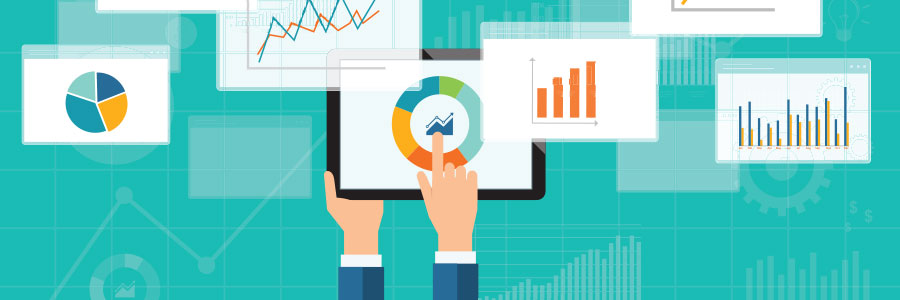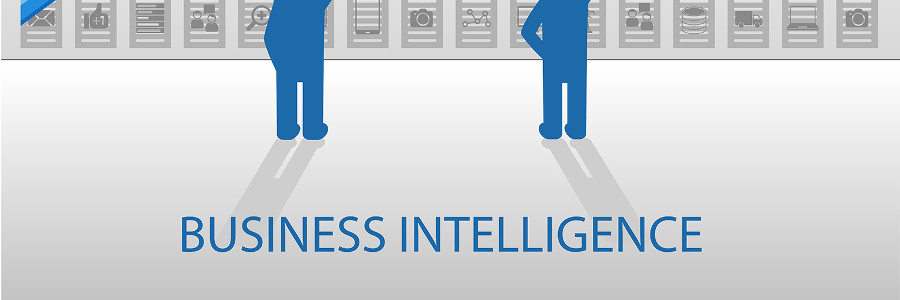 It’s rare that business owners have a chance to get move value out of their existing IT solutions without investing more resources in them. But with Microsoft’s latest data analytics platform, business owners can make sure they’re squeezing every last drop of productivity from Office 365, for free.
It’s rare that business owners have a chance to get move value out of their existing IT solutions without investing more resources in them. But with Microsoft’s latest data analytics platform, business owners can make sure they’re squeezing every last drop of productivity from Office 365, for free.
What is Power BI?
Released in the spring of 2016, Power BI is Microsoft’s business analytics platform. Regardless of whether or not data is stored within a Microsoft platform, connecting Power BI to a database allows you to create detailed graphs, charts, maps, and more. For example, if you upload sales records, dragging and dropping two columns is all it takes to map out where your product sees the most demand.
Recently, Microsoft announced a brand new feature for business owners who want to get more value out of their software subscriptions. The Office 365 adoption content pack collects information about how your employees use Microsoft productivity software, and feeds it directly into Power BI’s analytics. There are four types of insights you can work with:
Adoption
These metrics give you visibility into how much each O365 platform is being used. You may be paying for OneDrive accounts for the entire organization, only for Power BI to reveal that less than a quarter of your team is using it. Compare enabled users and active users to get a clearer picture of your investments.
Communication
You can also see exactly how employees are using communication solutions. If nearly everyone on the team is accessing Skype for Business from a mobile data connection, it might be time to reduce your investments in cellular-based minutes.
Collaboration
Microsoft has several collaboration platforms, and without proper guidance, employees are likely to use the easiest one rather than the best one. Power BI shows you how much time users spend time in their own Word, PowerPoint, and SharePoint documents compared to the time they spend in documents from colleagues. This shows you which platforms encourage the most collaboration and which ones are struggling.
Activation
– The activation insights give you under-the-hood visibility into which versions of O365 users are running, and what devices they use to access them. That may seem like trivial information, but it can have huge impacts on cyber security.
Power BI comes in three different plans: Desktop, Pro, and Premium. Best of all, both the Desktop plan and the Office 365 adoption content pack are totally free. If you like what you see, consider enlisting us to set up and optimize either a Pro or Premium Power BI deployment — we’re only a phone call away!



 Investing in customer relationship management (CRM) software is absolutely essential for small- and medium-sized businesses that want to up their sales performance. It helps sales departments understand their clients, tailor their marketing efforts, and more. If your business isn’t already using CRM, here are five reasons why you should definitely give it a chance.
Investing in customer relationship management (CRM) software is absolutely essential for small- and medium-sized businesses that want to up their sales performance. It helps sales departments understand their clients, tailor their marketing efforts, and more. If your business isn’t already using CRM, here are five reasons why you should definitely give it a chance.
 With Business Intelligence software, companies have the ability to pull data from various sources throughout the company, from human resources to accounting and marketing reports. By combining information from across departments, owners have all the data they need to make the best decisions for their company. Let’s see how BI technology can help companies budget for the new fiscal year.
With Business Intelligence software, companies have the ability to pull data from various sources throughout the company, from human resources to accounting and marketing reports. By combining information from across departments, owners have all the data they need to make the best decisions for their company. Let’s see how BI technology can help companies budget for the new fiscal year.
 There are many marketing techniques SMBs use to gain clients. Free information products, brochures, and press releases are just a few among many. But how do you know what’s most effective? It all comes down to looking at data and seeing for yourself what’s worked before. We’ve gone through the trouble of doing just that, so you can see how one age-old marketing technique can give a big boost to your business.
There are many marketing techniques SMBs use to gain clients. Free information products, brochures, and press releases are just a few among many. But how do you know what’s most effective? It all comes down to looking at data and seeing for yourself what’s worked before. We’ve gone through the trouble of doing just that, so you can see how one age-old marketing technique can give a big boost to your business.






 Implementing Business Intelligence (BI) software and other tools can help your company grown by leaps and bounds. However, it has to be planned for with the proper level of diligence and care to truly be beneficial to your business. Haphazardly installing BI software can result in an expensive misstep that sees you fall behind the competition. But with well executed BI planning and implementation, your company can grow in ways never imagined.
Implementing Business Intelligence (BI) software and other tools can help your company grown by leaps and bounds. However, it has to be planned for with the proper level of diligence and care to truly be beneficial to your business. Haphazardly installing BI software can result in an expensive misstep that sees you fall behind the competition. But with well executed BI planning and implementation, your company can grow in ways never imagined.